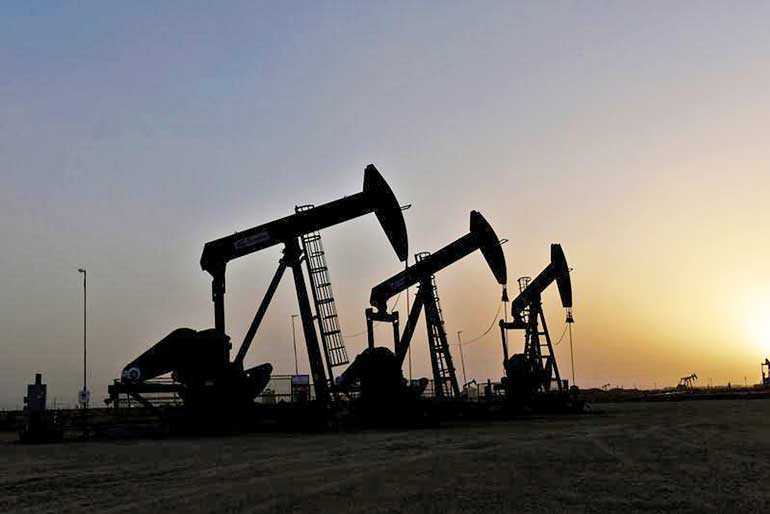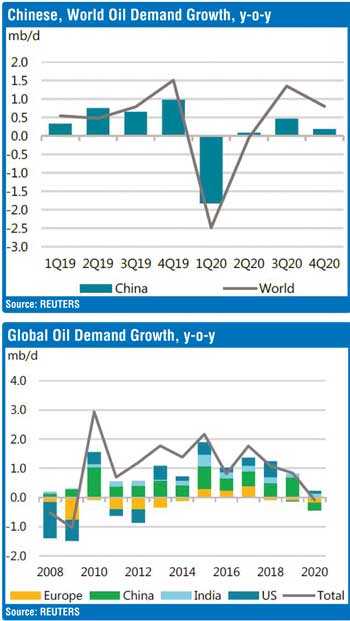Friday Apr 04, 2025
Friday Apr 04, 2025
Tuesday, 10 March 2020 00:00 - - {{hitsCtrl.values.hits}}

Pump jacks operate at sunset in Midland, Texas, US, 11 February - Reuters
London (Reuters): Global oil demand is set to contract in 2020 for the first time in more than a decade as global economic activity stalls due to the coronavirus, the International Energy Agency said on Monday.
The sharp downward revision in demand expectations came as oil prices LCOc1 dropped by more than a quarter and were set for their biggest one-day fall in 29 years after Saudi Arabia ignited an crude price war in the market. [O/R]

The energy watchdog said it expected oil demand to be 99.9 million barrels per day (bpd) in 2020, lowering its annual forecast by almost 1 million bpd and signalling a contraction of 90,000 bpd, the first time demand will have fallen since 2009.
Paris-based IEA said medium-term outlook report that in an extreme scenario where governments fail to contain the spread of the coronavirus which has affected over 100,000 people, consumption could drop by up to 730,000 bpd.
The virus has led to a sharp drop in industrial activity particularly in China, other Asian economies, as well as Italy, one of the worst affected places outside China. The virus has led to a slowdown in demand for ground and air transport.
“The coronavirus crisis is affecting a wide range of energy markets - including coal, gas and renewables - but its impact on oil markets is particularly severe because it is stopping people and goods from moving around,” IEA Executive Director Fatih Birol said in a statement.
Following the 2020 demand shock, however, the IEA expects oil consumption to bounce back strongly and rise by 2.1 million bpd in 2021.
After that, growth is set to decelerate and rise by only 800,000 bpd by 2025 due to slower growth in transport fuels demand as governments implement policies to improve car engine efficiencies and cut greenhouse gas emissions.
“The coronavirus crisis is adding to uncertainties the global oil industry faces as it contemplates new investments and business strategies,” Birol said.
While oil demand is set to gyrate sharply, the IEA kept its forecast for global oil supplies largely unchanged, with production capacity set to grow by 5.9 million bpd by 2025, marginally outpacing demand.
The production growth is set to come mostly from expansion in the US shale output, as well as from rising output in Brazil, Guyana and Canada.
Expansion of production in Iraq and the United Arab Emirates, offsetting declines in Libya and Venezuela, means output from the Organization of the Petroleum Exporting Countries (OPEC) will rise by 1.2 million bpd by 2025.

Discover Kapruka, the leading online shopping platform in Sri Lanka, where you can conveniently send Gifts and Flowers to your loved ones for any event including Valentine ’s Day. Explore a wide range of popular Shopping Categories on Kapruka, including Toys, Groceries, Electronics, Birthday Cakes, Fruits, Chocolates, Flower Bouquets, Clothing, Watches, Lingerie, Gift Sets and Jewellery. Also if you’re interested in selling with Kapruka, Partner Central by Kapruka is the best solution to start with. Moreover, through Kapruka Global Shop, you can also enjoy the convenience of purchasing products from renowned platforms like Amazon and eBay and have them delivered to Sri Lanka.
Discover Kapruka, the leading online shopping platform in Sri Lanka, where you can conveniently send Gifts and Flowers to your loved ones for any event including Valentine ’s Day. Explore a wide range of popular Shopping Categories on Kapruka, including Toys, Groceries, Electronics, Birthday Cakes, Fruits, Chocolates, Flower Bouquets, Clothing, Watches, Lingerie, Gift Sets and Jewellery. Also if you’re interested in selling with Kapruka, Partner Central by Kapruka is the best solution to start with. Moreover, through Kapruka Global Shop, you can also enjoy the convenience of purchasing products from renowned platforms like Amazon and eBay and have them delivered to Sri Lanka.